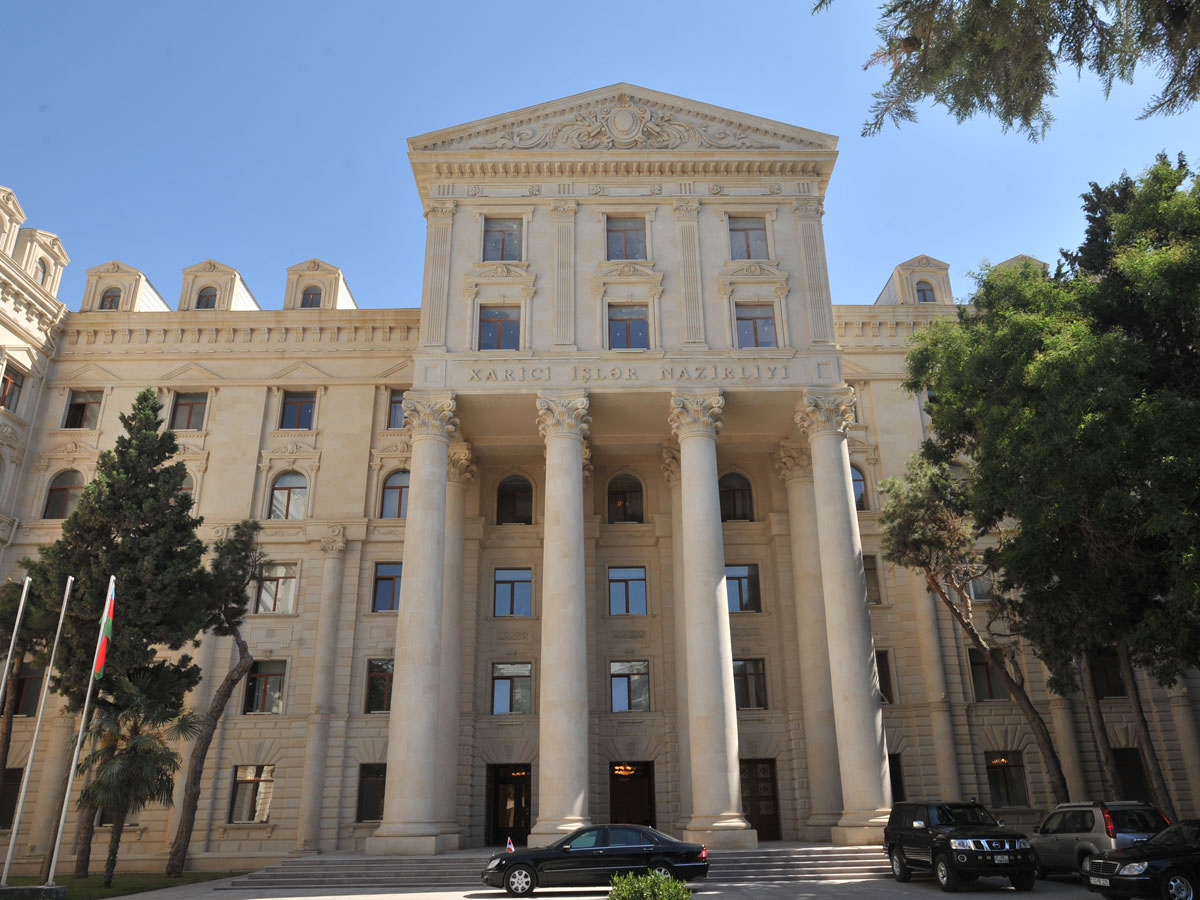Baku, Azerbaijan, March 27
Trend:
The aggressor country – Armenia – is trying to avoid international responsibility for its crimes, Azerbaijani Foreign Ministry’s Spokesperson Hikmet Hajiyev said March 27.
Hajiyev noted that as part of the military aggression and the occupation policy of Armenia against Azerbaijan, a policy of vandalism – destruction, looting, appropriation, changing of the belonging and the assignment of material, cultural and religious monuments – is systematically carried out in the occupied territories.
He stressed that the policy of destroying the material and cultural heritage belonging to the Azerbaijani people in the territories occupied by Armenia and the territory of present-day Armenia, which is the historical Azerbaijani land, is vandalism not only against the Azerbaijani people, but against the entire human civilization.
‘The cases of destruction and looting of material and cultural monuments belonging to the Azerbaijani people in the occupied Azerbaijani territories have been established with precision. Armenia barbarously destroyed material and cultural resources – 1,891 units, including 738 historical monuments, 28 museums, where more than 83,500 exhibits were stored, four galleries, 14 memorial complexes and 1,107 cultural institutions in the occupied territories of Azerbaijan,” Hajiyev said.
“These are a mosque complex in the Jabrayil district dating back to the 17th century, the Yukhari and Ashagi Govhar Agha mosques dating back to the 18th century and the Mosque with a clock in Shusha, and the mosque in Agdam, dating back to the 19th century, is not only plundered, but also desecrated since cattle are kept there. Meanwhile, such archaeological monuments as Vagif Mausoleum, Natavan’s house, Karavansaray in Shusha were plundered and destroyed,” the spokesperson added.
“Architectural features were changed and historical Albanian Christian churches located in the occupied Khojaly, Kalbajar, Lachin and Khojavand districts of Azerbaijan are presented as Armenian churches. Albanian Christian churches of Ganjasar and Khudavang dating back to the Middle Ages, in Kalbajar district, also among them. Illegal archaeological excavations have been conducted in the Azykh Cave and around Aghdam district since 2003,” Hajiyev said.
He said that the same situation is with the cultural heritage of Azerbaijani people in the occupied territories.
“The Demirbulag Mosque in Yerevan was wiped out, the Blue Mosque was “reconstructed” to distort its origin. The Haji Novruzali Bey Mosque, built in the second half of the 18th century, Sardar Palace or Khan’s Palace were also destroyed. The Sardar Mosque in Yerevan also suffered a systematic destruction and was completely destroyed in 2014,” the spokesman said.
Azerbaijan’s Ministry of Foreign Affairs, in coordination with the Ministry of Culture and Tourism, has prepared and already submitted to UNESCO, UN, the Council of Europe, the OIC, ISESCO and other international organizations reports "about destruction of historical and cultural heritage belonging to the Islamic religion in Azerbaijan's territories occupied by Armenia” and "the destruction of historical and cultural heritage in Azerbaijan's territories occupied by Armenia,” Hajiyev noted.
“As a result of these activities, the OIC regularly adopts resolutions condemning the destruction and desecration of the historical and cultural heritage and temples belonging to the Islamic religion in Azerbaijan’s occupied territories,” he added.
“The latest resolutions were adopted in 2015, 2016 and 2017 at a meeting of the OIC Council of Foreign Ministers in Kuwait, Uzbekistan and Côte d'Ivoire,” Hajiyev noted.
“The Ministry of Foreign Affairs and the Ministry of Culture and Tourism repeatedly raised the issue on organization of assessment missions on the current situation related to material and cultural monuments in the occupied Azerbaijani territories. Armenia, which is aware of the responsibility it incurs for vandalism committed against the material and cultural heritage, hinders this in every possible way,” the spokesperson added.
During the meeting between Azerbaijani Foreign Minister Elmar Mammadyarov and UNESCO Secretary General Audrey Azoulay at the headquarters of the organization in January 2018, he once again raised the issue of sending UNESCO’s assessment mission to the occupied territories.
The acts of Armenia are a gross violation of the obligations undertaken by this country under the Hague Convention and the Second Protocol to the 1954 Hague Convention for the Protection of Cultural Property in the Event of Armed Conflict.
Illegal actions against cultural property and cultural heritage during armed conflicts are considered war crimes in international criminal law. Armenia as a state bears direct international legal responsibility for vandalism against material and cultural monuments in the occupied Azerbaijani territories.
The conflict between the two South Caucasus countries began in 1988 when Armenia made territorial claims against Azerbaijan. As a result of the ensuing war, in 1992 Armenian armed forces occupied 20 percent of Azerbaijan, including the Nagorno-Karabakh region and seven surrounding districts.
The 1994 ceasefire agreement was followed by peace negotiations. Armenia has not yet implemented four UN Security Council resolutions on withdrawal of its armed forces from the Nagorno-Karabakh and the surrounding districts.






